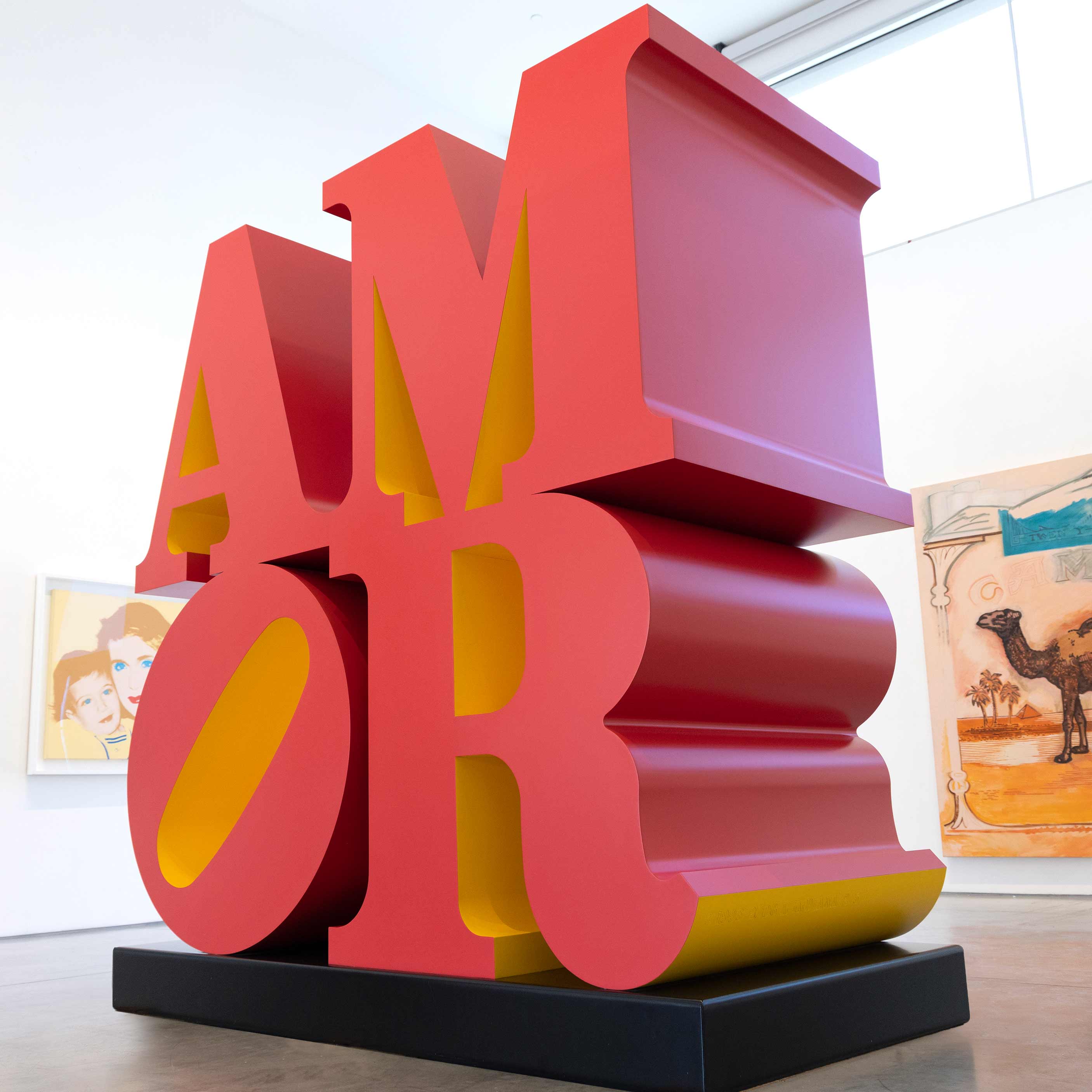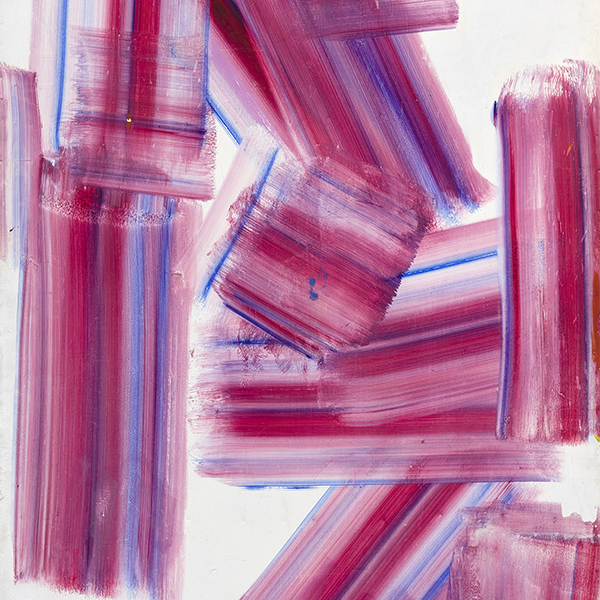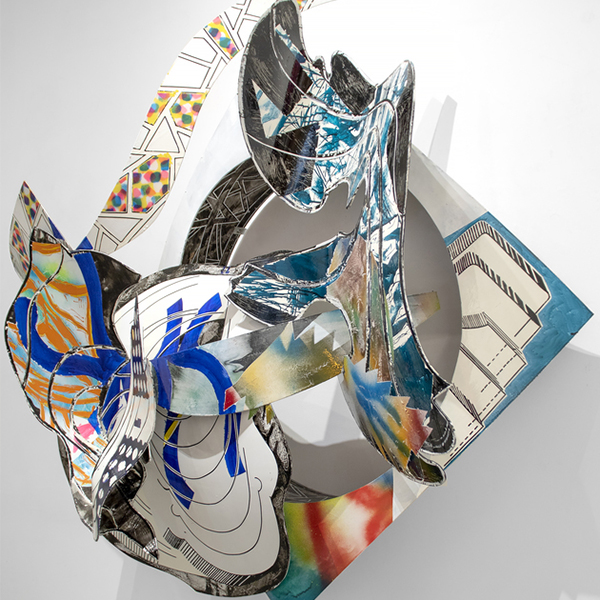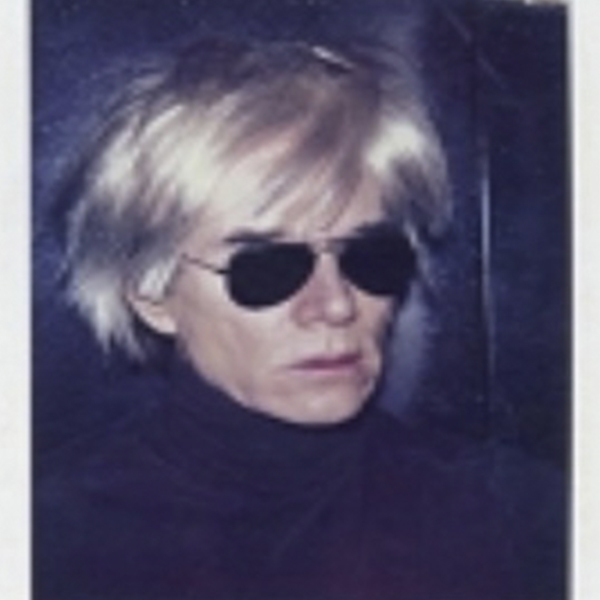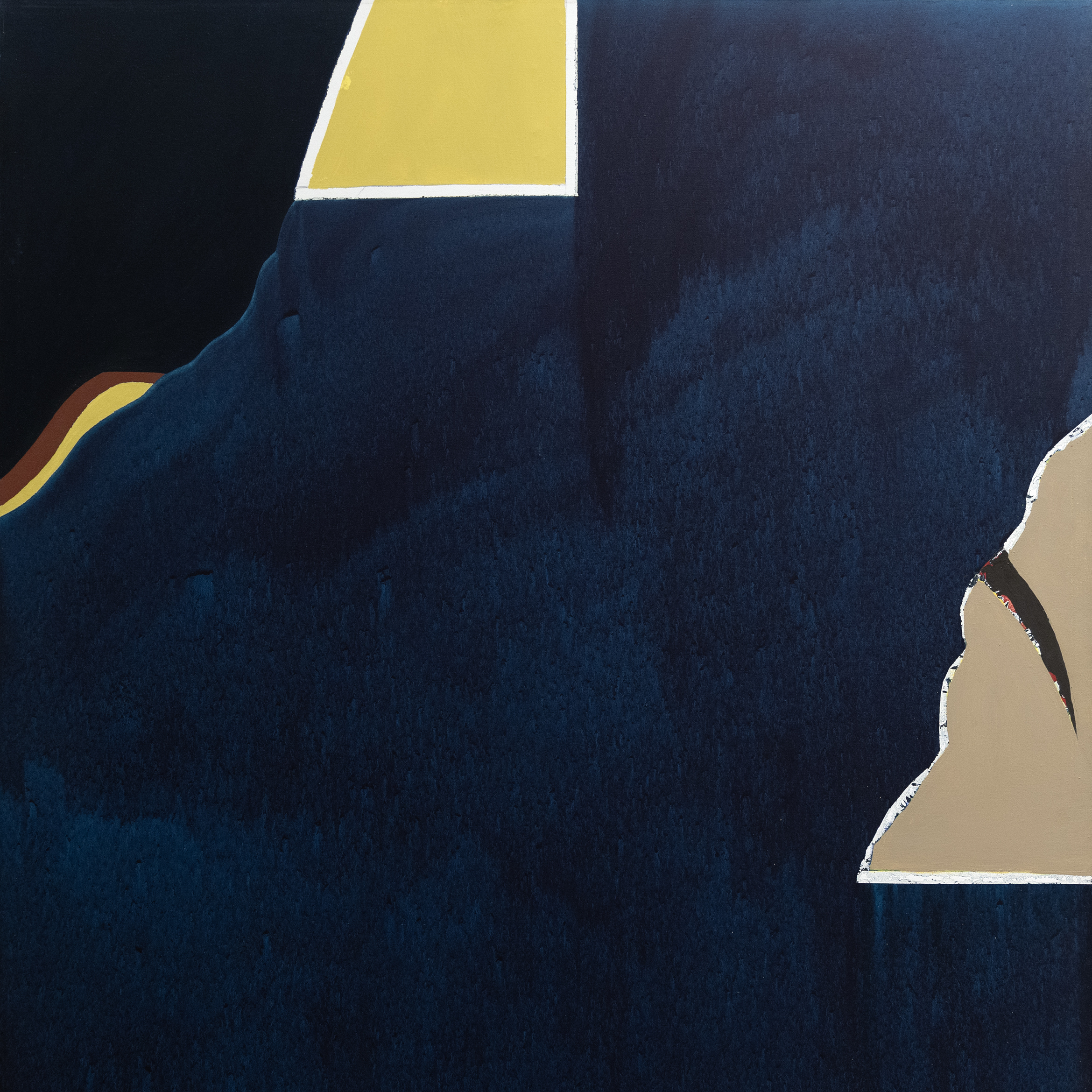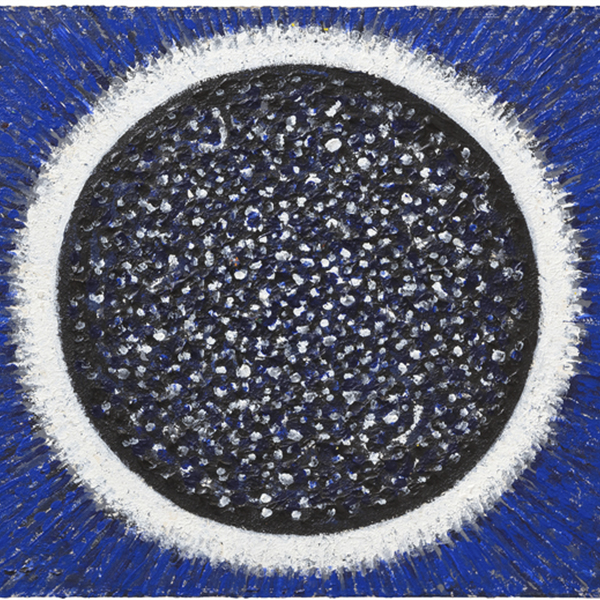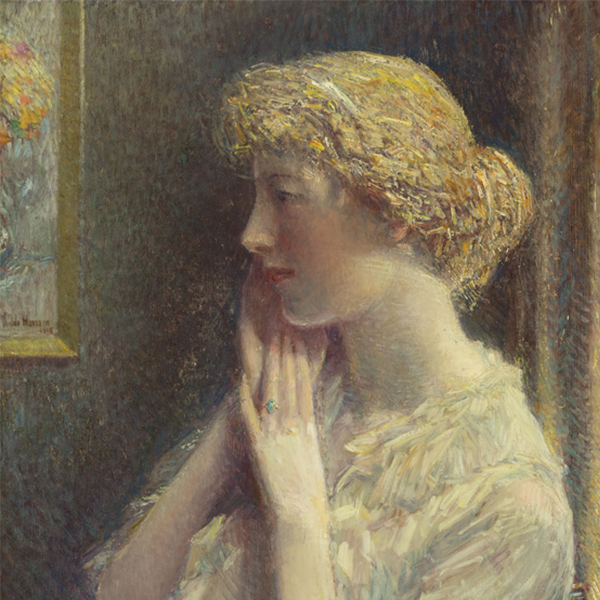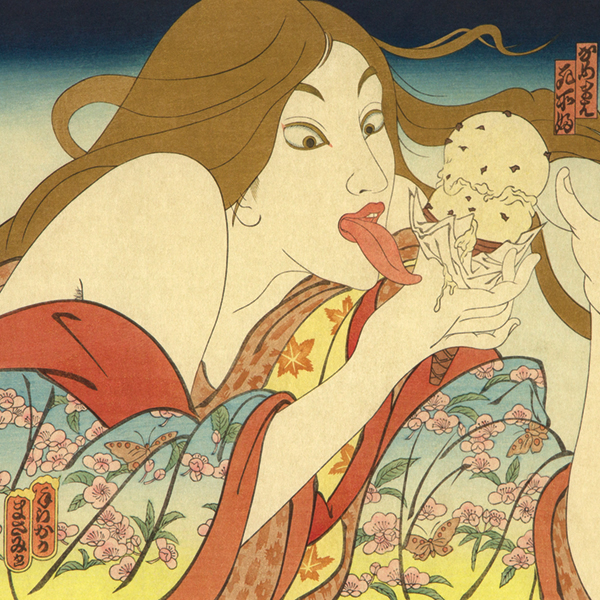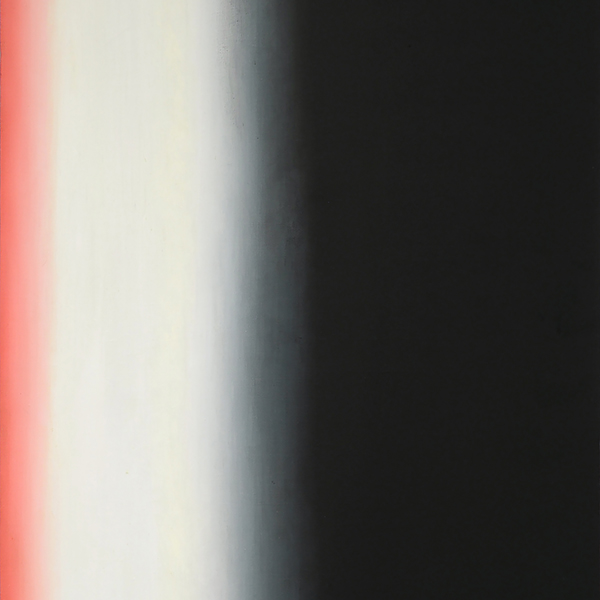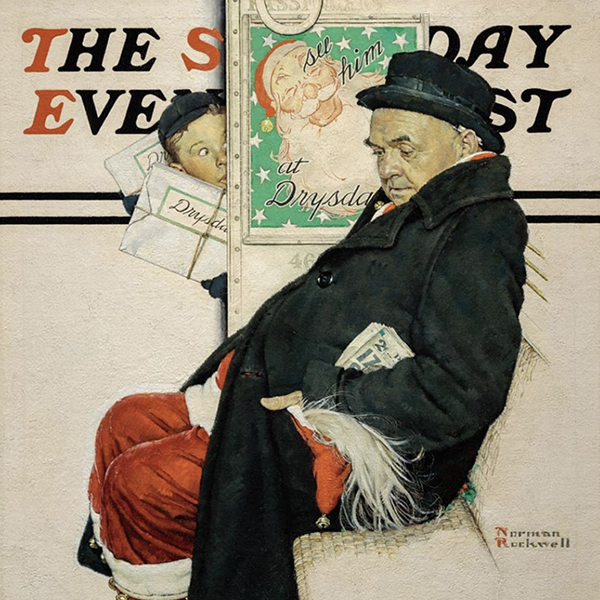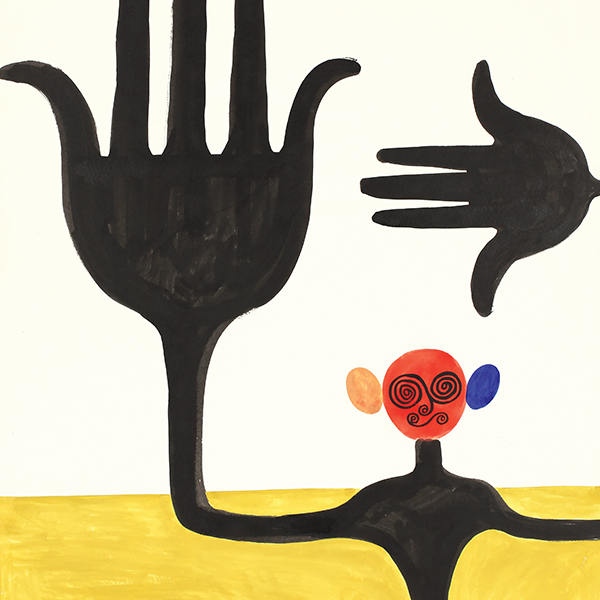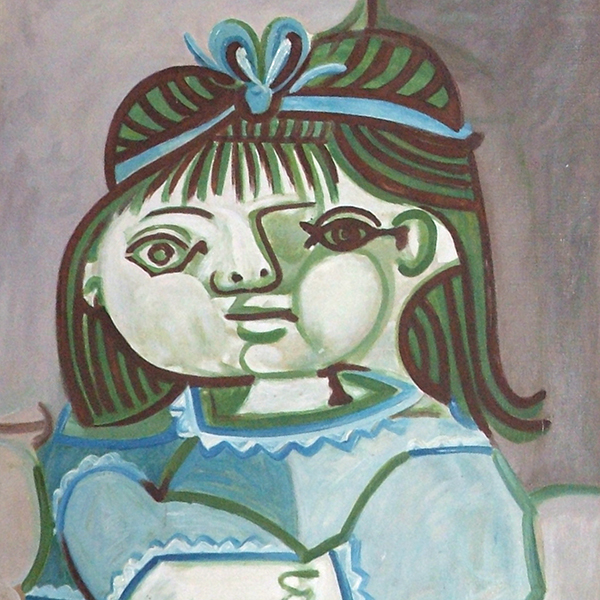Pablo Picasso visited Paris several times from 1900 before finally settling in the city in 1904, kicking off important artistic relationships and artistic endeavors. It was during this time in the City of Lights that Picasso developed his Blue and Rose period before diving into Cubism including the landmark painting Les Demoiselles d’Avignon.
Les communiants falls at a crossroads – created a year after the end of World War I as well as the tail end of Picasso’s exploration of analytic and then synthetic cubism. During this transitory time, Picasso also explored two seemingly competing styles – cubism and neo-classicism. For Picasso, who could effortlessly adopt different styles, neoclassicism was a vehicle for investigating new themes and subjects. Including the subject of this painting, the first communion of two young children, which Picasso rendered in both a cubist and a neo-classical style. These religious subjects are a crucial part of Picasso’s overall body of work. It was not just pictorial reality that Picasso sought to capture on the canvas, but also spiritual and metaphysical reality.
Renowned art patron Gertrude Stein said of the artist: “Picasso knows, really knows the faces, the heads, the bodies of human beings, he knows them as they have existed since the existence of the human race… why use words when one can express everything by drawings and colors.”




